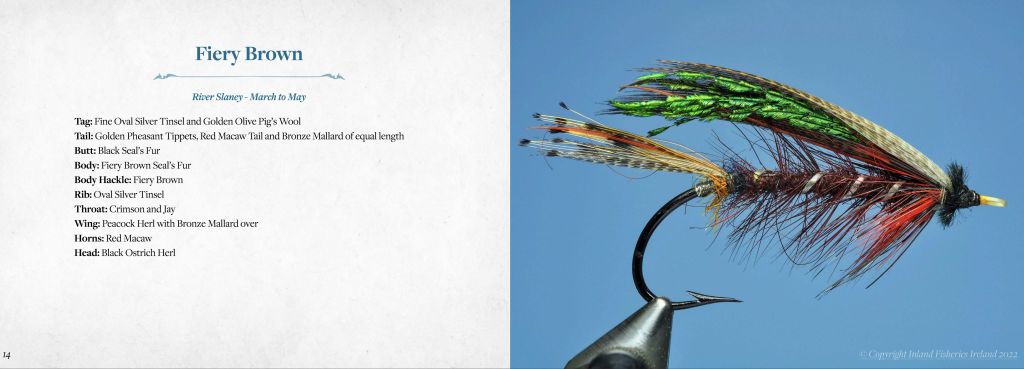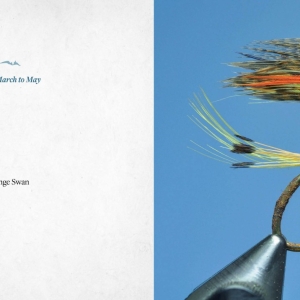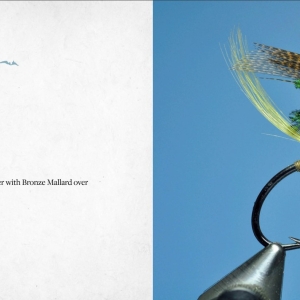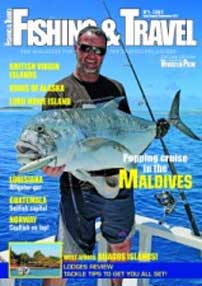New book brings “long-lost treasure” of Irish angling to new generations around the world
Traditional Irish salmon flies, commissioned one hundred and twenty years ago for the Cork International Exhibition in 1902, are set to feature in a new historical picture book to mark ‘World Book Day’.
Fly tying involves the ‘dressing’ of a fishing hook to create an artificial fly, which is then used by anglers at the end of a rod and line to catch fish. It’s a little-known part of Ireland’s heritage but many angling shops in Ireland in the late 1800s and early 1900s employed ‘fly dressers.’ Some were considered masters of their craft, thanks to their skills, creativity and the traditional methods that they used.
In recognition of the cultural importance of this craft and to record examples, a collection of traditional fly dressings was commissioned in 1902, with specific sets of flies collected for each of the twenty fishery districts throughout the country. The current custodians of this important collection, Inland Fisheries Ireland, is publishing the ‘1902 Cork Collection of Salmon Flies’ picture book online this week, making it freely available to new generations around the world.
Speaking at the launch of the picture book to coincide with World Book Day on March 3rd, the manager of the project, Shane O’Reilly of Inland Fisheries Ireland, said: “This new book offers a unique glimpse into Ireland’s past, showcasing the detail and beauty of traditional Irish salmon flies and the wide range of materials and techniques used by Irish fly dressers at the time. Many of those fly dressers are now revered around the world for the quality of their craft, so this collection is of significant cultural importance too, and is now available for the next generation to discover.”
Over a hundred years after the Cork International Exhibition took place, interest in the collection was re-ignited by angling author, the late E.J. ‘Ted’ Malone, who described the collection as a “long lost treasure of Irish Angling”. Malone worked alongside Peter Kealey and Peter Dunne, all fly tying experts, to meticulously examine, photograph and record the various fly dressings. Sadly, Ted Malone passed away in 2017 and the book is dedicated to his memory.
Over 380 individual salmon flies have been catalogued for this project, representing twenty fishery districts such as Galway, Ballina, Killarney, Dublin, Ballyshannon and Lismore. These flies were often ‘dressed’ for use on specific rivers or lakes, with subtle differences in hue and colour to reflect what was believed to be the best pattern on that fishery, at a particular time of year.
Suzanne Campion, Head of Business Development with Inland Fisheries Ireland said: “As a species, wild salmon have very strong cultural connections to Ireland, featuring in Irish folklore, myth and legend. These flies remind us of the importance of salmon stocks socially, economically and particularly as part of our natural heritage and biodiversity. A hundred and twenty years after they were first displayed in Cork, Inland Fisheries Ireland together with anglers and local communities, continue to work to protect and conserve Ireland’s precious wild salmon and their habitats for the benefit of future generations.”
Inland Fisheries Ireland is exploring ways of putting the original collection on display once more and members of the public are being encouraged to contact the state agency with any suggestions they may have.
‘The 1902 Cork Collection of Salmon Flies’ is available to view from the Inland Fisheries Ireland website at www.fisheriesireland.ie and from the Fishing in Ireland website at www.fishinginireland.info

 Boutique en ligne
Boutique en ligne





